"If you have no critics you'll likely have no success" -- Malcolm X
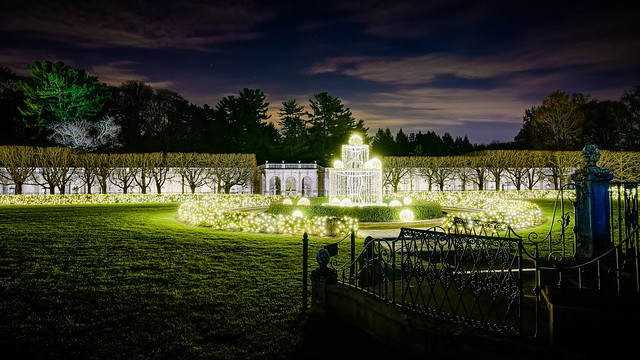 Longwood at Christmas: Fountain of Light
Longwood at Christmas: Fountain of Light
Fujifilm X-M1 and Fujinon XF R 14mm f/2.8 lens
Originally published December, 2013 (Updated 6/27/2015)
Another day, another camera system...
Remember: all my reviews are user experience based. I don't shoot test charts or do measurements. I take photos and make prints. My goal is to have my work hanging in peoples homes and businesses – not to be a "professional" reviewer or photographer.
In this blog post I'm going to stop short of a full review of a specific camera or lens – I am instead reviewing the system itself and explaining why I think it's worth a look and why I shoot it.
What Happened to Micro Four Thirds, John?
Nothing happened to it – I just don't shoot it any more. It's still out there, it's still excellent and it's still a great choice. It gets better all the time and it's still, in my opinion, the best choice for "hybrid photography" combining motion and stills. I've made another choice and I'll explain why as I go through this review. First, lets talk a little about Fujifilm's new "X" cameras in case you don't know much about them. Skim down if you don't need my take on Fujifilm.
 Poinsettia Point of View
Poinsettia Point of View
Fujifilm X-E1 and Fujinon 35mm f/1.4 lens
The (Re) Emergence of Fujifilm
Besides its film production, Fujifilm is a sometimes overlooked player in the SLR wars of the 20th century. They made a solidly performing product that was successful though not at the level of the likes of Canon, Minolta and Nikon.
Fujifilm is now an incredible player – though still small in sales – in the mirrorless camera market. They started with "something completely different" with the X100 and they didn't start with an entry level product. They went straight for the enthusiast and professional photographer's juggler with a compelling product that captured a lot of peoples' imaginations by going "back to the future". Fujifilm has been around for a long, long time and made some great film cameras way back when and their film products like Velvia reversal (slide) film are positively legendary.
Now, I've covered that whole "retro" thing in my Fujifilm X100 Review and it goes beyond looks -- it goes back to the basics of controlling the camera in more traditional ways that have withstood the test of time.
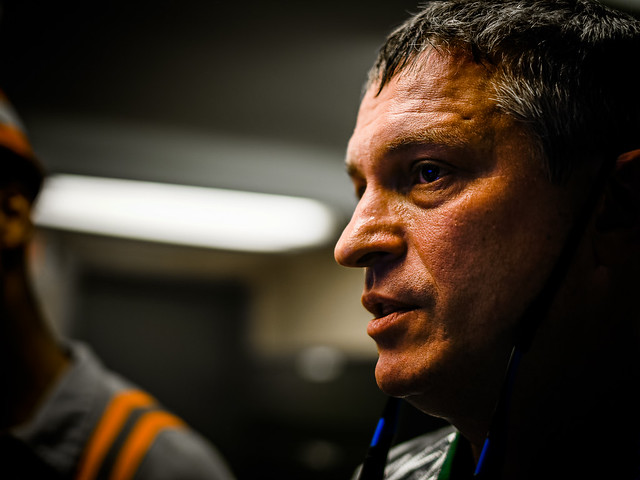 Metallurgist Thinking
Metallurgist Thinking
Fujifilm X-M1 and Fujinon 35mm f/1.4 lens
Still, the Fujifilm experience was far from perfect. It spawned a whole new wave of ambivalent reviewers who called it "the perfect camera EXCEPT..." -- and the exceptions were many. Fujifilm created a whole new idea of what a mirrorless camera should be, and it was not without missteps and it tends to be a polarizing brand -- generally people are either quite critical or quite loving it. Color me loving.
Up until the introduction of the X-M1 and X-A1 models, Fujifilm appeared to be aiming the X at the more mid to upper market segments, but the X-A1 in particular introduces people who might have bought entry level DSLR's (digital single lens reflex cameras) to the Fujifilm experience although the camera has been dumbed down a little. In the case of the X-A1 it is missing Fuji's magic sensor which I'll describe a bit to distinguish some of what makes the Fuji's very different technically.
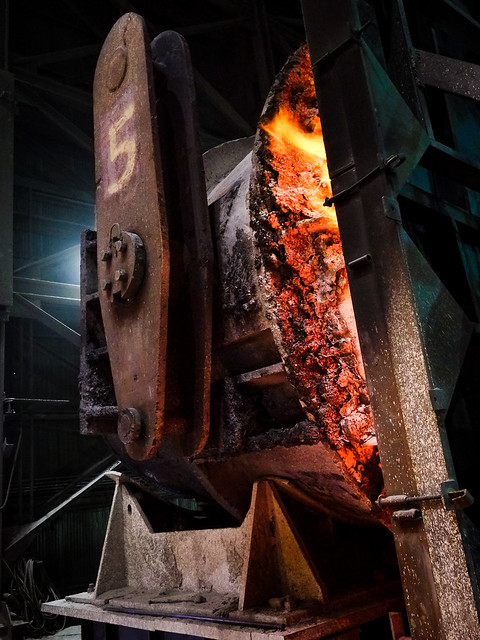
Fireside Glow
Fujifilm X-E1 and Fujinon 14mm f/2.8 lens
X-Trans
Fujifilm invented a new sensor color filter array called "X-Trans" that allows doing away with the optical low pass filter (anti-aliasing filter) while still minimizing moire problems. Conventional sensors use a color filter array named after it's inventor at Kodak and they are called "Bayer" sensors. They do suffer from moire easily unless they have an anti-aliasing filter that very slightly "blurs" the image. You can have a look at Fujifilm's explanation of X-Trans HERE.
The X-PRO1 which was Fujifilm's first X-System interchangeable lens camera which was again not positioned for the general consumer. It was big, beautiful, and innovative. It was X-Trans.
Ultimately, the expense of the hybrid optical/electronic viewfinder spawned a less pricey and very capable model that was slightly smaller than the chunky X-PRO1. That model is the X-E1. Fujifilm has also released an updated X100 called the X100S and now the X-M1 and X-A1. The X100S has an X-Trans sensor with built in phase-detect autofocus. The X-A1 is distinguished by the absence of an X-Trans sensor and the substitution of a conventional sensor -- and yet it still outperforms everything in its class.
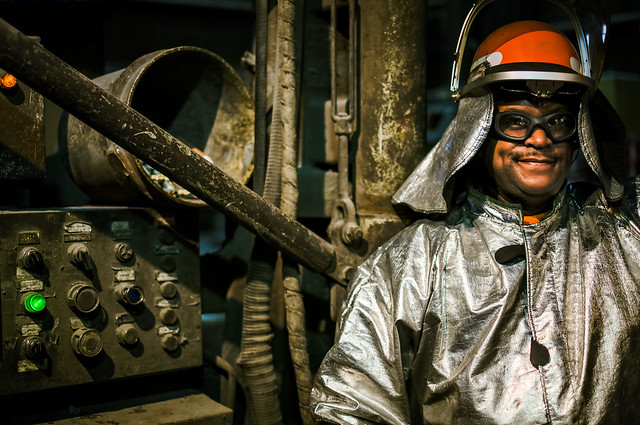
At the Control Panel
Fujifilm X-M1 and Fujinon 35mm f/1.4
The Lineup
Let's further distinguish all these APS-C models (I'm ignoring true compacts here) as they are mostly still in production, more or less in order of release. Basically, all models feature contrast detect auto-focus (CDAF) but two models now feature phase detect auto-focus (PDAF) on the image sensor.
- X100 - Fixed lens compact with a conventional Bayer pattern sensor and the original EXR Pro processor. No deconvolution and noticeably slower at everything than the X100S. Priced below the X100S. Recently Fujifilm released a major update to the firmware to provide improved performance EVEN THOUGH IT IS DISCONTINUED!
- X-PRO1 - Top end anchor for the system it features Fujifilm's innovative and troublesome X-Trans sensor, lots of traditional manual controls, and an eye level viewfinder that can function as an optical viewfinder with electronic overlays, or a full electronic viewfinder simply by flicking a lever. Much improved over time but with a quirky and slow-ish AF system. CDAF only.
- X-E1 - All the goodies of the X-PRO1 but with only an electronic viewfinder. Of course all the models have the ability to do live view with the LCD screen on the back of the camera. Also has an X-Trans sensor. Like the X-PRO1, known for it's AF quirks and slowness. CDAF only.
- X100s - Fixed lens compact with the Fuji interface and hybrid viewfinder. Has an X-Trans II sensor and an updated "EXR II" processor with some interesting tricks including a "deconvolution" routine that can compensate for diffraction and restores sharpness at very small apertures. Priced for advanced amateurs and pros. Has reasonably fast hybrid CDAF/PDAF system.
- X-M1 - Stripped down, plastic body X-Trans camera but with the nice EXR II processor. No viewfinder, and there is none you can add to it. All the image quality of it's bigger brothers. Priced for the mid range enthusiast/amateur market and WAS the least expensive X-mount interchangeable lens camera until the X-A1 was introduced. CDAF only but very responsive. It's the only X-System camera (well, the X-A1 also) with a tilting screen. I use mine for my tripod work on urbex shoots because of the tilting screen which is great for those very low angle shots -- especially for an old man like myself, lol. If I were to cite just one feature from Panasonic I miss in particular it would be that wonderful articulating screen system they have. Love those.
- X-A1 - A camera I maintain will be controversial. $200 less than the X-M1 with the same kit lens and it is a Bayer sensor model and not X-Trans. It is otherwise identical in design and features to the X-M1. Some early reviewers are calling the image quality BETTER than the X-M1, and some say it's so close they recommend the X-A1 over the X-M1. One might worry that the Bayer vs. X-Trans debate and it might dilute Fujifilm's uniqueness. Time will tell but it's been pretty well reviewed and doesn't seem to have hurt much so far. CDAF only but very responsive.
- X-E2 - An X-E1 with the X100s X-Trans II sensor and many, many software redesigns that make it so responsive including a hybrid PDAF/CDAF system and the LMO (lens modulation optimization) deconvolution system. The LMO removes the effect of diffraction at smaller apertures which allows a greater use of the aperture range of the camera – but only in JPG and so far only with certain Fujinon lenses.
- X-T1 - (Updated 6/27/2015) I have one of these now and the other Fujifilm bodies are gone but I have an X100s again. The X-T1 is like an X-E2 on steroids and with a DSLR form factor, even more manual control dials, tilt screen, and a killer EVF. See this review for more information: Punching Above Their Weight: The Fujifilm XT-1 and Fujinon 18-135mm Lens Review
Fujifilm has hinted at a couple of new models but they will come out at some future date. So far, the rumors suggest a new design weatherproof body (which has come out now as the X-T1) as well as an updated XPRO body. Fortunately, Fuji hasn't been bit by “full frame madness” and will continue to develop the existing X-line as APS-C for awhile. I was happy to hear that as I believe it would dilute the development of the existing system.
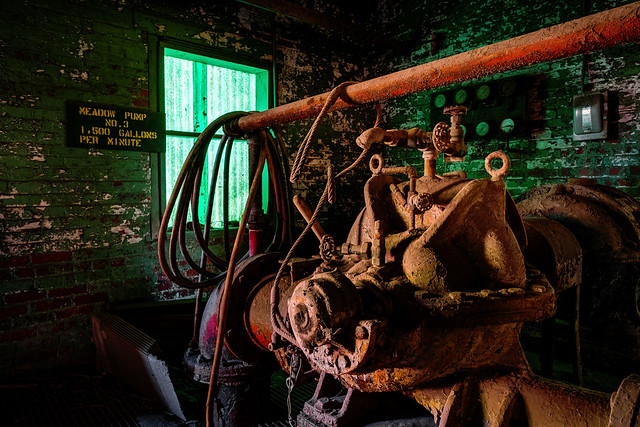
1500 Gallons Per Minute, Retired
Fujifilm X-E1 and Fujinon 14mm f/2.8 lens
Bored yet? I am... let's talk about the X-E1 and X-E2 and what it's like to use and why I've adopted the Fujifilm X System and the X-Trans sensor.
For the record, I have owned and sold the following X cameras (updated 6/27/2015):
- Fuji X100
- Fuji X-E2
- Fuji X-E1
- Fuji X-M1
I have purchased and retained these X cameras:
The True Beginning of the Actual Review - X Marks the Spot
Tired of the X-Jokes? Sheesh, tough room. Fine, let's begin before you become an eX blog reader...
Here's the “box scores” for those who don't want a lot of discussion. Pros and Cons, let's go.
Pros
- X-Trans sensor is sharp, sharp, sharp. Perhaps a better way to say it is that is has very high acuity with the X-Trans CFA and no anti-aliasing filter at all – though you may need to learn some new tricks to get the most out of the sensor in RAW. JPG's are excellent but they are still JPG's so sometimes when you have that crazy light you will need RAW – but it can be tricky. Since there is no anti-aliasing filter, there is no “advance blurring” of the shot. This means that high-ISO noise filtration will leave more genuine detail in the shot since you start with more. I think this is what's responsible for the great high-ISO performance when the sensor is not more advanced in sensitivity than other Sony-based imaging systems.
- EXR processor from Fujifilm makes incredible JPG's. I will shoot JPG with these cameras where I would normally have only shot RAW. Since memory is cheap these days I often shoot JPG+RAW and if the JPG is good I use it, and if not I process the RAW.
- Great control of highlight and shadow compression and midtone contrast. You can easily tune a JPG to the subject matter if you have the time for that.
- Useful film simulations that actually resemble the original film stocks.
- A better than average auto dynamic range control system that doesn't lie to you about the ISO you are ACTUALLY shooting. Many systems (including the Fuji system) get more highlight latitude by actually underexposing at a higher ISO and then pushing the resulting image back up. The Fuji system tells you the actual ISO which can be confusing, but at least it's honest.
- There are no bad Fujinon lenses at this time. They're all very good to amazing. Micro four thirds is very well provided with lenses too but there are so many that MFT has made a few clunkers.
- Fujifilm's "kaizen" philosophy of continuous improvement has resulted in a truly unprecedented pushing out of updates to cameras, even discontinued models. This is simply amazing and making Fujifilm fans even more loyal. The feeling is, and evidence supports, the idea that Fujifilm is truly listening and trying to improve everything they make -- even after they've already made it. Wow.
- Old school camera handling and build quality. These things remind me of my old film cameras in all the right ways: solid and with aperture rings, shutter speed dials, and dedicated EV comp dials. I was able to operate the cameras effectively wearing heavy protection gear against molten metal including thick gloves. Try that with your “push a small button while turning a small wheel” DSLR. I couldn't have adjusted the camera with very thick, heavy gloves on with my old D7000. See the photo below.

Me in Protective Gear at the Steel Mill
Fujifilm X100S
Cons
- Some things are just not quite totally there. Like AF. The X-E2 starts to feel “modern” but the on-sensor PDAF auto-focus system has only vertically oriented sensors, no horizontal and especially no “cross” type. So, even in good light it will switch back to CDAF with certain subjects. Interestingly, CDAF is now even faster than previous models so it's not a big deal, but when PDAF is working it really is very fast. Still, AF is an area that needs more development even on the X-E2 and X100s. (Update 6/27/2015) On the new X-T1 AF is almost there and with a new 4.0 firmware update should be at DSLR performance levels.
- Within the limited selection available, the lenses that are there for the system are very, very good indeed. Even the weakest of these, the 18mm f/2, is still very good and the rest of the XF series are excellent. The Zeiss lenses for the system are great too – BUT: nobody yet makes constant aperture fast zooms for pro work. I'm sure it will be addressed, but as of now it hasn't. I've not used the lower-quality XC series lenses so I can't comment on them.
- No weather sealing. Rumors say the next body from Fuji is a weather sealed one, some say the X-PRO2 will be next to be released. But as of now, neither lenses nor bodies offer professional weather sealing. (Update 6/27/2015) The X-T1 is weather sealed and has been out since about mid 2014.
- No touch screen – but I mention this for those who care. I really like the Olympus and Panasonic touch screens but the controls are so good on the Fuji's I am fine without them.
- This is a shared problem with several mirrorless systems: there is no AF illuminator in the flash systems. DSLR's have AF modules that see in infrared and the flashes have IR AF assist lamps that are fantastic in low light without blinding your subject. The Fuji system can't use such a system and if you shoot moving subjects in low light like a wedding reception (which I did with these once) you will be frustrated. I sure was.
- RAW files are tricky to “develop” (demosaic). I use Lightroom's RAW system when the material works with it, but some images – and particularly ones with a lot of green detail like foliage – call out for a better RAW development more like the JPG engine in the camera. To the rescue comes people like Iridient, Photo Ninja, and even Capture One I think is good with it now. X-Trans can deliver like no other sensor I've used BUT it's not something for the casual shooter I don't think. These cameras (except the X-A1) require a more skilled photographer to get the most out of them. Taking the time to learn how to do that is very rewarding.
- HD video performance on all these cameras is average. Not terrible by any means, but nowhere near what the Sony and Panasonic mirrorless cameras in particular are capable of. The main problems are moire and jaggies.
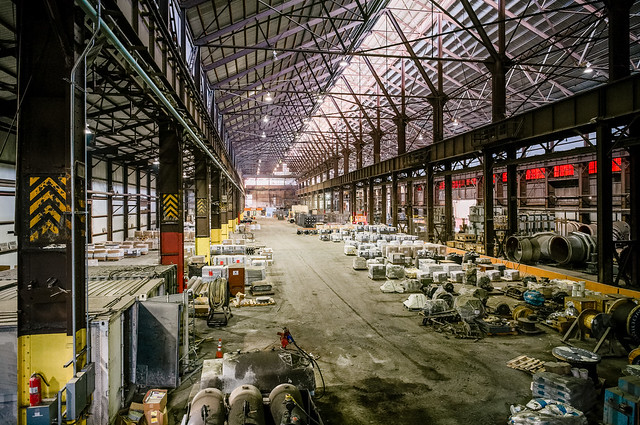
End of an Era: The Open Hearth
Fujifilm X-E1 and Fujinon 14mm f/2.8 lens
Where the System is Now
With the release of the X-E2, Fujifilm really has stepped up their game. With the exception of video, they have improved everything over the previous generation of interchangeable lens cameras in the X-System. They are using the latest on-sensor PDAF technology and refining the controls – all while still constantly improving their old cameras and pushing out firmware improvements.
In fact, Fujifilm has definitely addressed almost all complaints about the system – although they still don't work as well in certain areas as some of their competition. Still, they are starting to really overcome the critics... well, those who aren't just haters anyway, lol.
If I had to give a report of their “health” in the marketplace, I'd say “guarded”. They really have low sales even in a market which has shrunk overall anyway. Mirrorless in the USA is still trying to catch hold although Asia and Europe are quite taken with mirrorless cameras. Despite American's seeming unwillingness to lose their optical-only viewfinders and mirror boxes, mirrorless will eventually dominate – it's just a matter of time.
For me though, Fuji has been the best balance between the quality of a DSLR and the small, lightweight footprint of mirrorless cameras.
Lenses
As those who buy the new Sony A7 and A7R, and like the early adopters of NEX cameras found out, the availability of good native glass is critical to maximum utility of the cameras. Although a few folks may be happy manually focusing adapted lenses, or fighting with AF capable adapters that don't perform like native lenses – most photographers would find that limiting to the point of pointlessness.
Fortunately, Fujifilm has worked hard to build a complete system and partners like Zeiss have added to the mix.
Fujifilm has just announced as of this writing a new 10-24mm (15-36mm equivalent) f/4 ultrawide zoom lens that really rounds out the range. With the release of the lens in March 2014 the system will have native coverage from equivalent 15mm ultrawide to 300mm (345mm if you count the XC lenses) range with excellent quality. Well, one presumes the 10-24 mm lens will be excellent but we'll see.
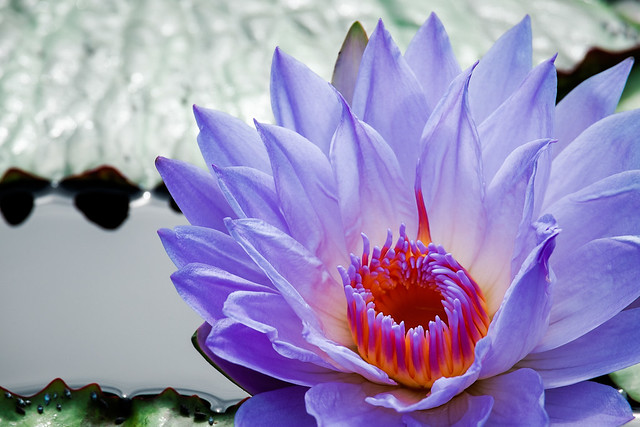 Bathing Beauty
Bathing Beauty
Fujifilm X-E1 and Fujinon 55-200mm f/3.5-4.8 lens
Here's the lens rundown as I see it (Updated 6/27/2015) .
- Zeiss 12mm f/2.8: This lens is a wow. I've owned a lot of ultrawides with my favorite being the Tokina 11-16mm f/2.8 but the Zeiss is sharper wide open than it was, and the corners are better than any ultrawide I've ever used. If you've used ultrawides, you know how weird the corner blurring can be – it's not just unsharpness, it's odd. There's a lot less of that with this lens along with astoundingly good rendering and so forth. I love it.
- Fujinon XF 10-24mm f/4: This lens is amazing and stabilized as a bonus. This has replaced the Zeiss 12mm giving me a wider view and more handheld shooting options even at the slower aperture. Sharper than it has any right to be but I'm okay with that.
- Fujinon XF 14mm f/2.8: Another truly awesome lens. I had this but traded it out for the Zeiss 12mm. The 14mm is probably sharper at it's best, but not terribly so. The 14mm is also very fast focusing and it can be used with the X-E2's LMO system and PDAF while the Zeiss will only work in CDAF and won't work with the LMO. The 14mm also has a pull-back focus ring that allows easy manual focus, and it has a DOF scale.
- Fujinon XF 18mm f/2: The worst lens of the bunch with more distortion, and less sharp wide open than most of the lenses. Also the edges and corners are never really superlative like the 14mm and 35mm lenses. Still it's moderately small “pancake” and at a fast f/2 it's very useful for wide low light photography and I like it but I didn't use it enough and it's sold.
- Fujinon XF 23mm f/1.4: I haven't used this lens but from all reports it is exceptional. Loved it but sold it to slim my kit.
- Fujinon XF 27mm f/2.8: The tiny pancake lens which is different in not having an aperture ring as there is simply no room for it on the very short body that is less than an inch long. It's not a bad lens at all and makes very a very unobtrusive package with a view between the 23mm and 35mm – slightly wide angle. Not super fast in terms of aperture, but still useful. It was nice but I didn't use it much so it too is sold.
- Zeiss 32mm f/1.8: Another lens I've not used but once again it is exceptional according to reviewers and friends I know that have it. But like the 12mm it can't make use of the most advanced features of the X-E2.
- Fujinon XF 35mm f/1.4: One of the best lenses I've ever used. It's sharp, has great bokeh – it's just amazing. It's a “normal lens” in equivalent focal length and one everyone should have. It's available for less than $500 and sometimes much less used. Good value. Despite all this I've sold it as again it is not something that I really need.
- Fujinon XF 60mm f/2.4 macro: Another I've not used. Slow to focus and not the lens you want for action, but like most macro lens it's super sharp and even makes a good portrait lens.
- Fujinon XF 18-55mm f/2.8-4: Probably the best “kit lens” I've ever seen or used. Solid construction, smooth operation, and very sharp. But I dislike using wide to normal zooms that are variable aperture. It defeats the purpose for me so I sold mine. However, it is an excellent lens. It is optically stabilized and that works well.
- Fujinon XF 55-200mm f/3.5-4.8: I did have this for awhile as it was the only native telephoto zoom (other than the lesser XC 50-230mm which I've not used). It's very sharp, has great optical image stabilization – it's one of the two existing XF lenses with that feature. Wish it was constant aperture, even if it was say f/4. Too slow to autofocus and I sold it and got the 18-135mm f/3.5-5.6.
- Fujinon 18-135mm f/3.5-5.6: I have this and it's better than I expected. Having a do-all lens is a compromise but mine is sharp enough for most things, very well stabilized, and a joy to shoot.
- Fujinon XF 56mm f/1.2 and XF 56mm f/1.2 APD: These are fast portrait lenses with about an 85mm equivalent focal length. I have the non-APD version on the way as I update this article. The APD version has better bokeh by adding a special radial gradient filter internally called an "apodizing filter". The problem is that this ends up making phase detect AF stop working. More on this lens in a future update.
- Fujinon XF 90mm f/2: Haven't used it but it's supposed to marvelous.
- Fujinon XF 16mm f/1.4: Another fast wide prime (24mm equivalent).
- The XC Lenses: Don't know much about these except they are the “plastic fantastics” of the Fujinon line. There is a 16-50mm f/3.5-5.6 and a 50-230mm f/4-5.6. Not very well built, plastic mounts – but the reviews say they are optically quite good. They were introduced as the X-M1 and X-A1 hit the market to provide lower cost options for the lower tier of the mirrorless market. They are stabilized.
So to wrap this up a bit: what you have in the X-System is a versatile and totally useable system with absolutely extraordinary image quality and a way of operating that is unmatched by anything short of a Leica – and maybe not even by that. The lens selection is getting awesome with something for everybody.
I'll end this with photos I've taken with various of the lenses as some examples of how they perform – at least for me. Don't get wrapped up in the camera used (except for the X100/X100S samples) as they all produce the same images. The sensors and processing are all so alike as to be indistinguishable.
One final note though: this system might be for you or NOT. I've moved to it and not looked back – but others have been really unhappy and gone back to micro four thirds or whatever; or even moved up to a full frame system.
For the most part, Fuji X-System cameras are more an expert's camera. If you're not interested in mastering it's intricacies (and I dare say peculiarities) – I'd stay away. At the very least, rent or borrow one to see you if you can get on with it or not. Changing systems is a big investment and possible loss to you especially if you change your mind. Don't jump because I or anyone in particular likes it, or because it's the fashion of the moment. Change because you need something in your photography that this system can give you.
Some Sample Images by Lens
12mm Zeiss
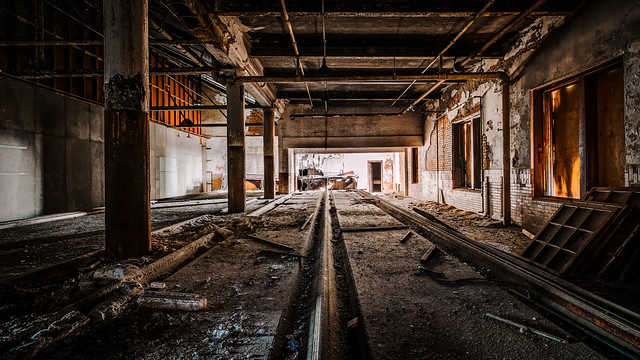 Executive Bowling Alley
Executive Bowling Alley
Fujifilm X-M1 and Zeiss 12mm f/2.8 lens

Cave of Winds
Fujifilm X-M1 and Zeiss 12mm f/2.8 lens
14mm Fujinon
 Pumpkin Town
Pumpkin Town
Fujifilm X-M1 and Fujinon 14mm f/2.8 lens
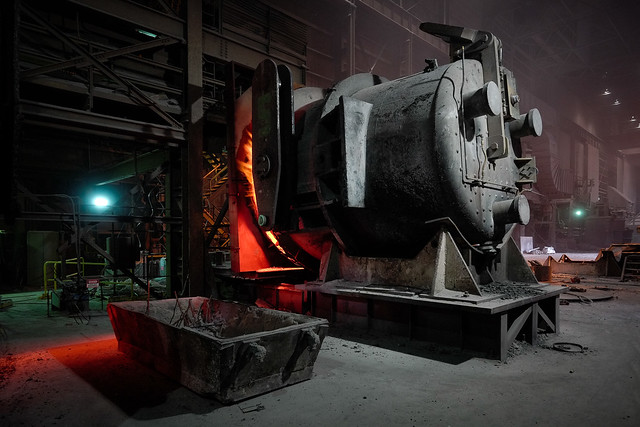 You're Getting Warmer
You're Getting Warmer
Fujifilm X-E1 and Fujinon 14mm f/2.8 lens
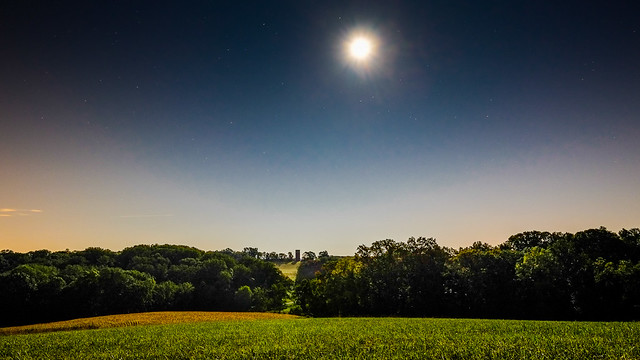
By the Heat of the Moon
Fujifilm X-E1 and Fujinon 14mm f/2.8 lens
18mm Fujinon
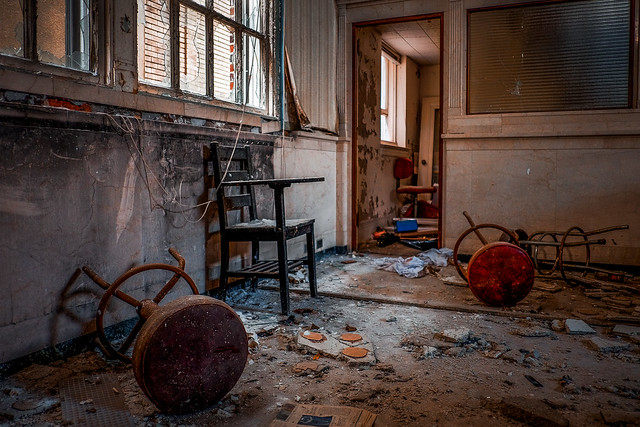
Have a Seat, We'll be Right With You
Fujifilm X-E2 and Fujinon 18mm f/2 lens
 Latter Days
Latter Days
Fujifilm X-E2 and Fujinon 18mm f/2 lens
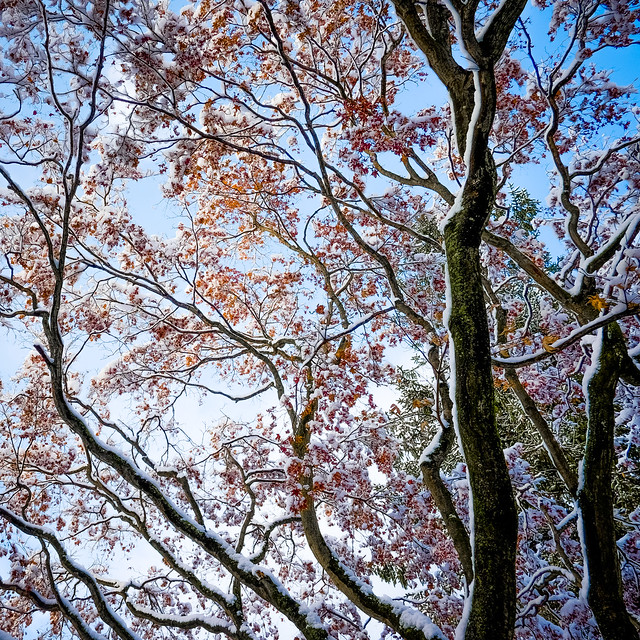
Here Comes the Sun
Fujifilm X-E2 and Fujinon 18mm f/2 lens
35mm Fujinon

Tiny Fly, Impressionist World
Fujfilm X-M1 and Fujinon 35mm f/1.4 lens
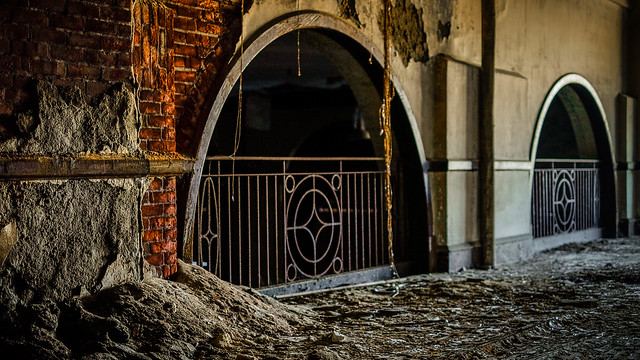 Where the Leaders Fed
Where the Leaders Fed
Fujifilm X-E2 and Fujinon 35mm f/1.4 lens
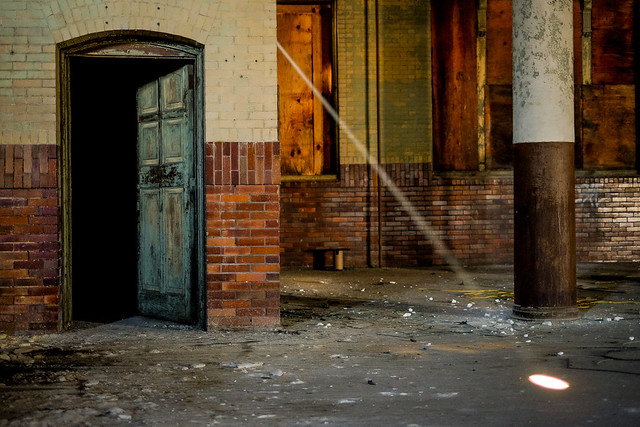
Spot and Door Fujifilm
X-E2 and Fujinon 35mm f/1.4 lens
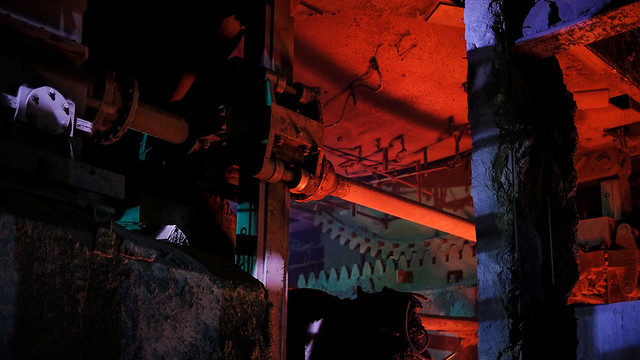
The Lovely Colors of Hell
Fujifilm X-E1 and Fujinon 35mm f/1.4 lens
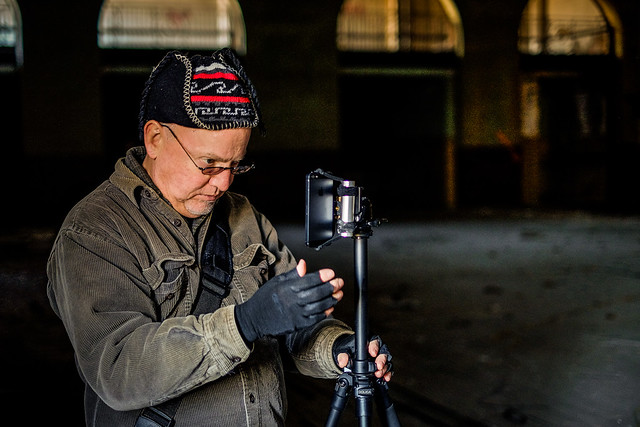
New Fangled Flat Camera
Fujifilm X-E2 and Fujinon 35mm f/1.4 lens

The Old Silo at Daybreak
Fujifilm X-E2 and Fujinon 35mm f/1.4 lens
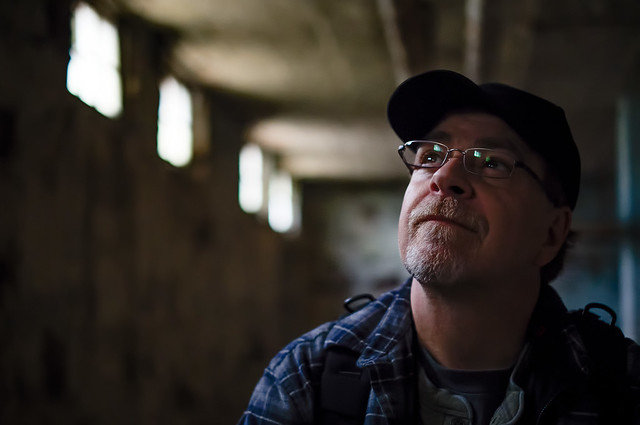
My Brother Mike doing Urbex
Fujifilm X-E1 and Fujinon 35mm f/1.4 lens
18-55mm Fujinon
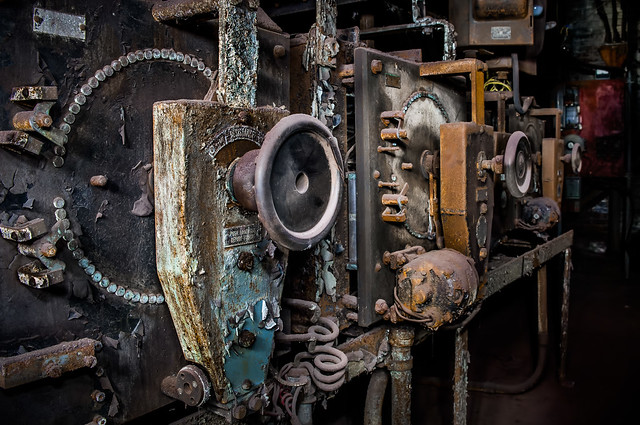 Hidden Places
Hidden Places
Fujifilm X-E1 and Fujinon 18-55mm f/2.8-4 lens
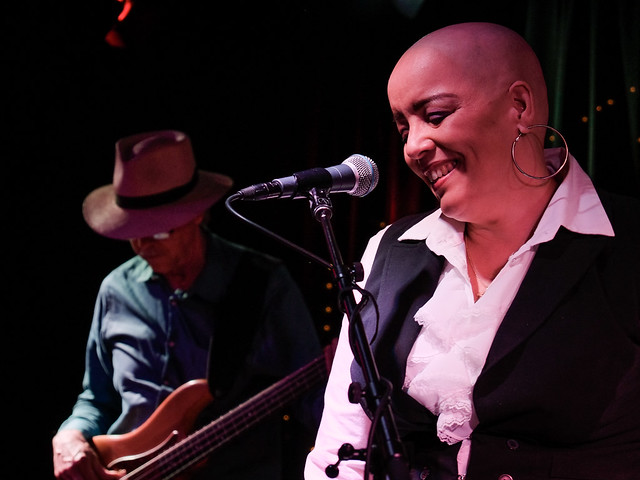
Lily Belts it Out
Fujifilm X-E1 and Fujinon 18-55mm f/2.8-4 lens

Lovely Michelle
Fujifilm X-E1 and Fujinon 18-55mm f/2.8-4 lens
55-200mm Fujinon
 Emoting
Emoting
Fujifilm X-E2 and Fujinon 55-200mm f/3.5-4.8 lens
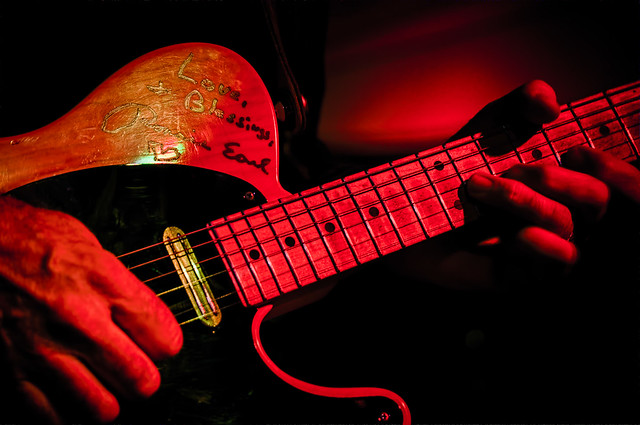 Ronnie Earl's Blessing
Ronnie Earl's Blessing
Fujifilm X-E2 and Fujinon 55-200mm f/3.5-4.8 lens
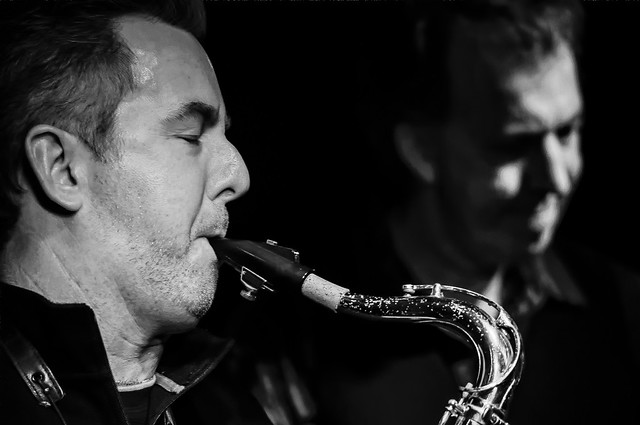
Blow the Blues
Fujifilm X-E2 and Fujinon 55-200mm f/3.5-4.8 lens

Fire in the Sky
Fujifilm X-E1 and Fujinon 55-200mm f/3.5-4.8 lens
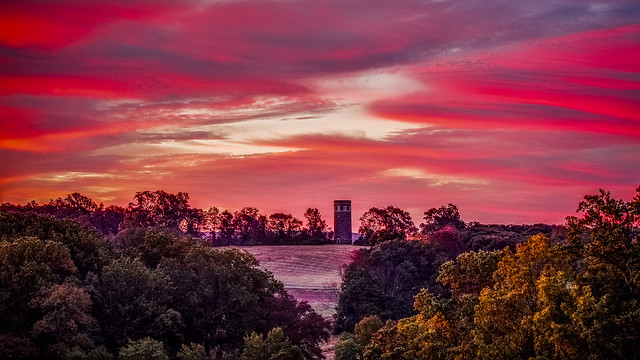 Sunrise over the Tower
Sunrise over the Tower
Fujifilm X-E1 and Fujinon 55-200mm f/3.5-4.8 lens
 Hannah
Hannah
Fujifilm X-E1 and Fujinon 55-200mm f/3.5-4.8 lens
Fujifilm X100 and X100S (23mm f/2 fixed lens)
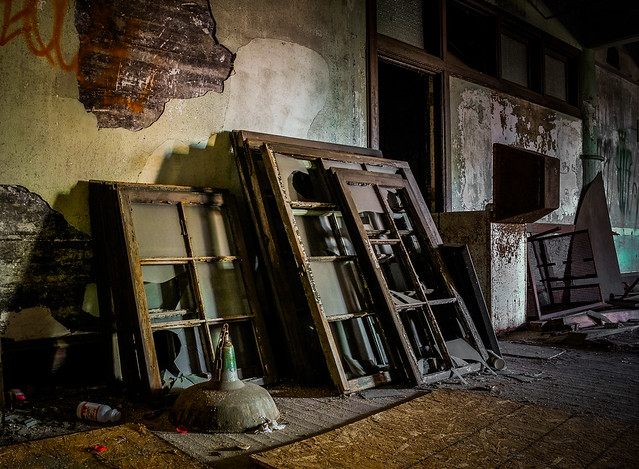 Windows to Nowhere
Windows to Nowhere
Fujifilm X100

Eternal Timeout
Fujifilm X100
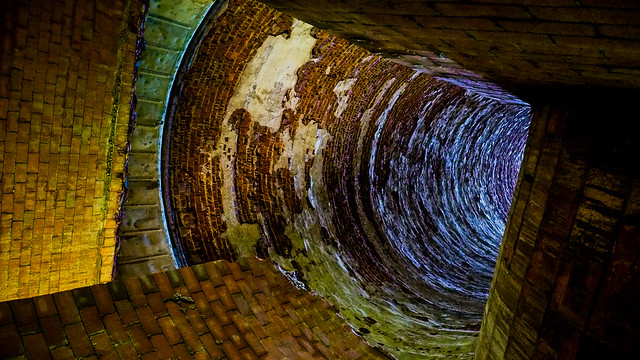
Move Down Towards the Light
Fujifilm X100
 Where Robots Go to Die
Where Robots Go to Die
Fujifilm X100
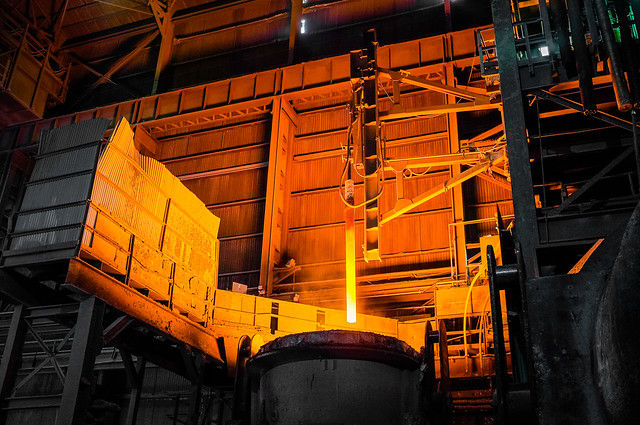
Stir Lance
Fujifilm X100
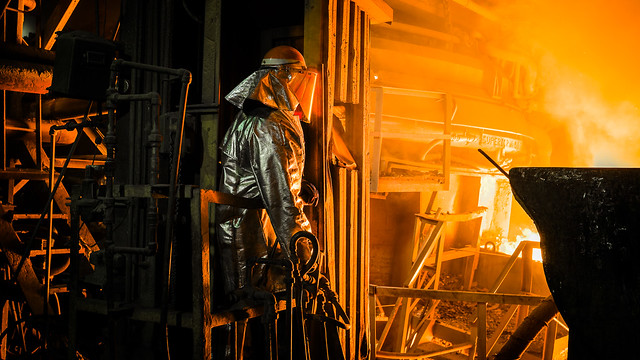
In the Hot Metal Zone
Fujifilm X100S
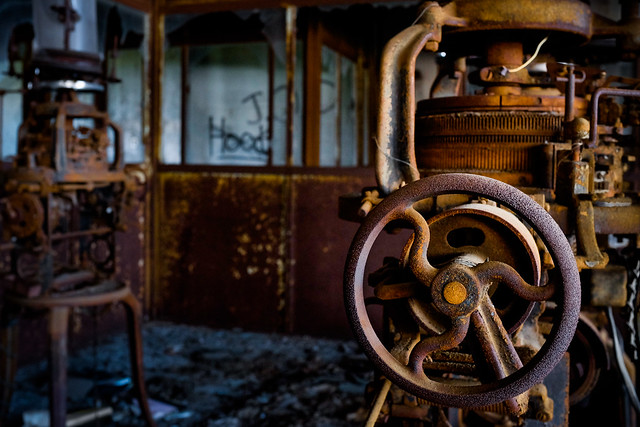 Couple of Hosers
Couple of Hosers
Fujifilm X100S

Seeing the Now from the Then
Fujifilm X100S
“Rules are made for people who aren't willing to make up their own.” – Chuck Yeager